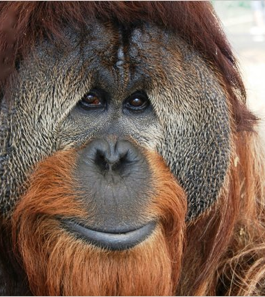
PNAS abstract
Humans and other primates are distinct among placental mammals in having exceptionally slow rates of growth, reproduction, and aging. Primates’ slow life history schedules are generally thought to reflect an evolved strategy of allocating energy away from growth and reproduction and toward somatic investment, particularly to the development and maintenance of large brains. Here we examine an alternative explanation: that primates’ slow life histories reflect low total energy expenditure (TEE) (kilocalories per day) relative to other placental mammals. We compared doubly labeled water measurements of TEE among 17 primate species with similar measures for other placental mammals. We found that primates use remarkably little energy each day, expending on average only 50% of the energy expected for a placental mammal of similar mass. Such large differences in TEE are not easily explained by differences in physical activity, and instead appear to reflect systemic metabolic adaptation for low energy expenditures in primates. Indeed, comparisons of wild and captive primate populations indicate similar levels of energy expenditure. Broad interspecific comparisons of growth, reproduction, and maximum life span indicate that primates’ slow metabolic rates contribute to their characteristically slow life histories.
<p>
Pontzer H, Raichlen DA, Gordon AD, Schroepfer, Walker KK, Hare B
O’Neillf MC, Muldoon KM, Dunsworth HM, Wood BM, Isler K, Burkart J, Irwin M, Shumaker RW, Lonsdorf EV, and Rosso SR. (2014) Primate energy expenditure and life history. PNAS. early view.
<p>
The full article is available here. Also see Pontzer lab page.